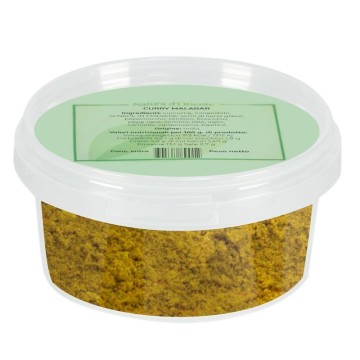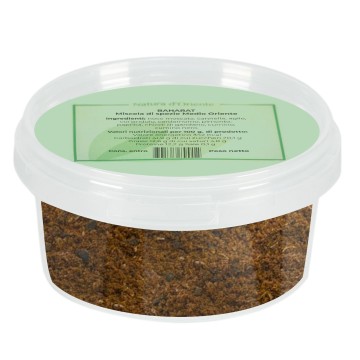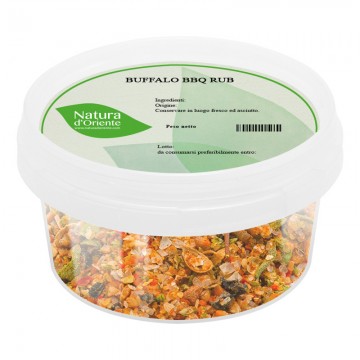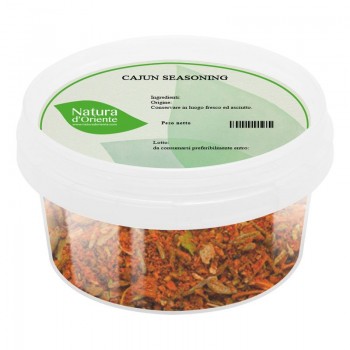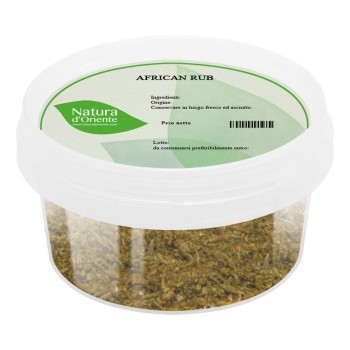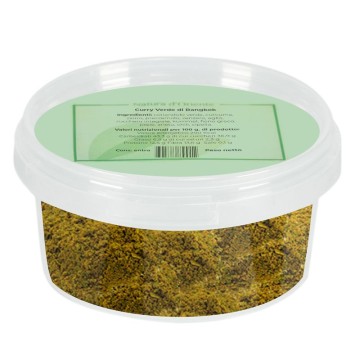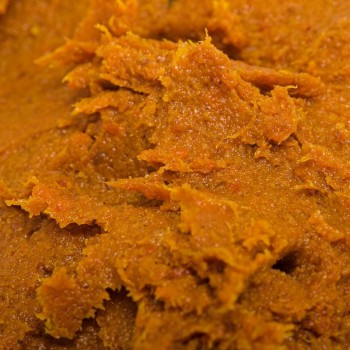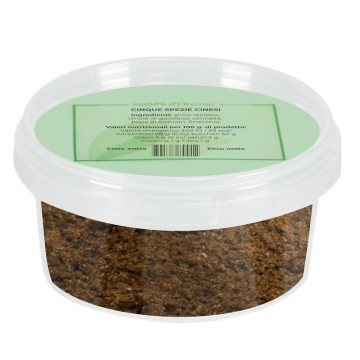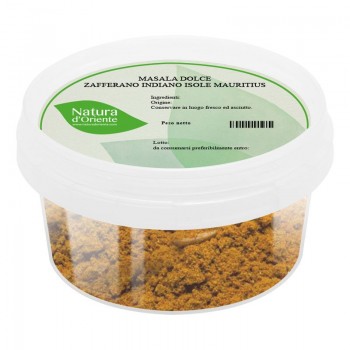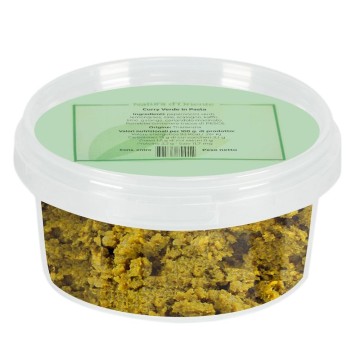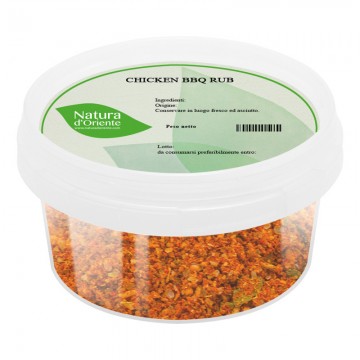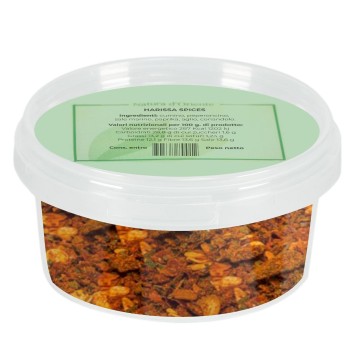This blend of Indian spices gives dishes an intense and pungent flavour. It is characterized by a strong flavor, compared to other curry combinations. Medium spicy, Madras curry gives a strong and provocative note, due to the addition of chilli powder and spicy paprika. It is an Indian curry perfect for dishes based on legumes and vegetables, stews, white meats, fish and potatoes. The blend renders a balanced taste of fragrant spices, starting with light heat notes, to become fiery and deep: a spicy adventure! Its bright orange color is much appreciated for garnishing dishes, while its digestive qualities for the body are useful for well-being. Curry improves the digestive phase, with a mixture of spices that help the transit of food, avoiding the formation of excess gas in the gastrointestinal tract. It has antioxidant qualities that help regulate the metabolism, promote cardiovascular well-being and blood circulation. The properties of curry spices are also advantageous for those who want a low-sodium diet, as they flavor foods with very little salt. Furthermore, its ingredients provide nutrients such as minerals (turmeric, fenugreek and cumin are rich in iron), calcium, potassium and other nutrients (vitamins and antioxidants).
The spices of Madras Curry
This spice blend combines 11 ingredients for an aromatic, balanced and delicate complexity of flavors.
The coriander infuses the curry with notes that evoke citrus fruits, dill and fennel. Its sweetish and fresh tone pairs well with cumin.
The turmeric gives the spicy mixture a warm, slightly pungent flavour, with bitter notes; an intense and exotic scent.
The cloves add a warm flavor with notes between sweet and spicy; the aftertaste is fruity and gives pleasant floral aromas in this strong curry.
The cumin elicits a pungent but delicate taste, combining with fennel seeds and cloves. The warm scent can release toasted scents.
Thefenugreek gives a pungent and slightly bitter taste. The aroma is reminiscent of fresh hay, appreciated in blends dedicated to seasoning meat and fish.
The laurel or laurel introduces a herbaceous flavor tending towards bitter, with a strong tone; evokes citrus fruits and balances the more intense spices.
The fennel introduces a sweetish flavor reminiscent of anise and liquorice, as well as pungent notes. The scent is delicate and fresh, pleasantly energetic.
Garlic is an element with a strong and spicy flavour, which the palate welcomes in a full-bodied way to balance more delicate spicy notes.
The chili pepper represents the spicy element, the pungent and intense stimulus to the palate which creates the desired heat effect in Madras curry.
The spicy paprika adds a smoky flavor to the pungent one, with some much appreciated bitter notes to give depth to the curry.
Using Spicy Madras Curry in cooking
This mix of powdered spices is versatile, it adapts well to land and sea dishes, which you can enhance with its spiciness. The practical ground version allows you to add curry powder to meat and fish recipes, sauces and first courses. You can use it anywhere a recipe calls for curry powder, if you want a tangy note but the basic elements of Indian curry. When you want to liven up a dish, you can toast and mix spices, sauté curry in oil or ghee. It can be used in cooking as a seasoning for ground spices, to sprinkle on vegetables or as a finish. Its intense color makes various dishes with a dark and intense yellow-orange color, even with a hint - otherwise it can have a "muddy" effect in tone and a too strong taste. Always pay attention to the dose. Hot spices can irritate the palate and the gastrointestinal system, so the doses in the recipes must be respected - and the tip of a teaspoon is enough to give character to the dish you are preparing.
Meat and fish: you can use a Madras curry seasoning which is excellent for stews and red meat; also appreciated on white meats such as poultry, lamb or pork. The recipe for curry chicken nuggets is famous, typical of Anglo-Indian cuisine. This curry also pairs well with fish, with a pungent taste suitable for prawns and shellfish.
Savoury recipes: goes well with rice, roasted or sautéed vegetables, potatoes to give a pleasant tingle. Try ua light, exuberant sprinkle on legume and cereal soups, on eggs, and to give a strong spicy flavor to your dishes or baked goods. You can mix it with yogurt, butter or cheese, for particular recipes.
Sauces: the strong spicy note can be decisive for sauces that flavor meat, rice or fish. Excellent in mayonnaise to prepare a curry potato salad. Carefully add coconut milk and vegetable broth to the spreads and curry sauces.
Spicy Madras Curry Chicken Salad
Ingredients: 450 g boneless and skinless chicken breast, cut into small pieces - 2 tablespoons spicy curry powder Madras variety - 2 tablespoons whole yogurt - 2 tablespoons finely chopped shallots - 80 g olive oil - ¼ cup diced celery - 1 teaspoon chopped fresh garlic and ginger - 350 g water - 80 g thick coconut milk - 1 pinch of cayenne pepper – fresh lettuce
Preparation
Place the chicken pieces in a bowl. Season them with yogurt and spicy curry. Leave to marinate for 15 minutes.
Place the chopped shallot and celery in a pan with the oil. Let them dry and then color slightly, without burning them. Add garlic and ginger, chicken with marinade and cover with water. Let simmer until the chicken is cooked through, about 10 minutes. Add the coconut milk, add salt and cook until the cooking sauce thickens slightly. Leave to rest and serve the chicken curry warm, with a pinch of cayenne pepper if you want to reinforce the pungent taste. Serve on a bed of lettuce.
Origins and History of Madras Curry
Its name derives from the city of Madras, the old name of today's Chennai and the fourth largest city in India. It is located on the east coast, considered one of the gateways to South India. This version of the markedly spicy curry powder always derives from the modern Anglo-Indian tradition of adding spices to dishes; creating ready-made mixtures called “curries”. Due to these qualities, over time the success of Madras Curry has been exceptional, so much so that it has rapidly expanded to the rest of the world. Thanks also to the exports of the famous East India Company, oriental spices, in their original or revised versions, became increasingly widespread in the nineteenth century. For this reason there are different types of curry, understood as a mixture of spices including Indian curry, garam masala and tandoori, English curry, Ethiopian curry, Thai curry. Madras curry is the spiciest variety. The first versions of Madras curry, ground spices, are witnessed in London in the mid-19th century, and from then on it was increasingly used among curry powder blends and Indian spices.


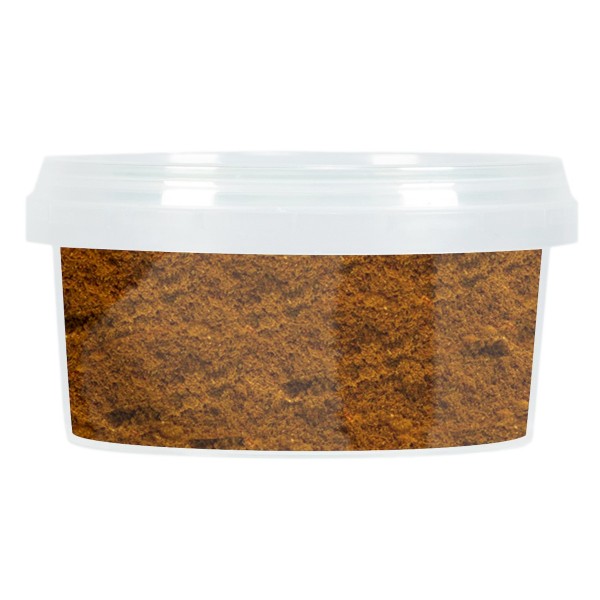








 No reward points for this product.
No reward points for this product.
